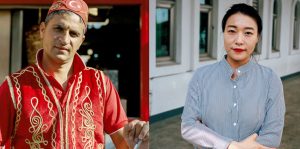This year marks the 10th anniversary of the Korean hostage crisis in Afghanistan, which was a turning point in the history of Islam in Korea. Today, South Korean Muslims make up a tiny minority, 0.2 percent, of the predominantly Christian and Confucian society.
As South Korea is opening its doors to Muslim tourists, trying to fill the vacuum left by the declining number of Chinese tourists following the debacle launched with the deployment of the US Terminal High Altitude Area Defense (THAAD) system, various generations of native Korean Muslims reflect on their double identity as Koreans and Muslims in South Korea.
The number of Muslim tourists coming to the country saw a 33 percent increase last year from 2015 and is expected to reach 1,2 million people by the end of 2017, as revealed by the Korea Tourism Organization (KTO).
Tapping into this economic potential, the country has increased the number of Halal certificates for its restaurants and prayer rooms, and the Seoul Tourism Organization is promoting a series of videos showcasing Muslim-friendly restaurants around the capital.
Islam and the Korean Peninsula share a history of mutual fascination and curiosity. From the era of the Silk Road in the 9th century to today’s modern interconnected world, the bonds that were once forged through maritime travel have now been passed on to a new generation of young Muslim Koreans, who try to find a balance between their Korean culture and newfound religion.
Retracing the history of Islam in Korea and its reintroduction to the country by Turkish troops during the 1950-1953 Korean War, Al Jazeera spoke with several generations of South Korean Muslims, who expressed the difficulties they face in the Confucian Korean society dominated by class, age hierarchy, a strong drinking culture, and a distrust of Islam.
Built in Seoul’s Itaewon neighbourhood, the Seoul Central Masjid opened on May 21st, 1976, thanks in part to donations from Malaysia and the cooperation of the Korean government, which gave away the land that it was built upon.
Harun Kara (left) is a Turkish citizen working at Mr Kebab, located at the entrance of what locals refer to as “Muslim Street,” a sloping street filled with Middle Eastern restaurants and Turkish sweet shops leading to the Seoul Central Masjid. Kara is part of a small Turkish community living in South Korea, who first arrived and settled in the country after the 1950-1953 Korean War, when 15,000 Turkish soldiers came to fight voluntarily alongside South Korean troops. Many chose to stay and reintroduced Islam to South Koreans. During the war, the Turks established “tent mosques” which were initially meant to serve the Turkish soldiers, but also favoured conversions among South Koreans and proved to have laid the groundwork for the spread of Islam in South Korea in the 20th century. The Turks’ involvement and relief efforts in South Korea left such a lasting mark that it is not unusual for South Koreans to describe Turks as their “blood brothers”. Safiya Kang (right) after working for ten years at the Seoul Central Mosque as an account manager and administrator, she decided to convert to Islam in 2015. “Initially, like many of my friends, I knew nothing about Islam and associated it with 9/11 and terrorism,” she said. “But I wanted to know more about Muhammad [the Prophet], Allah and what Islam really is… I believe Islam to be true, that’s why I converted,” she said. But despite having an understanding family and Christian husband who loves her halal Korean cuisine, she chooses to wear the hijab in the streets of Seoul only on rare occasions. “I don’t like when people stare at me,” she says. Although she found peace in Islam, she is continuously trying to find a balance between her identity as a human being, a woman, a Korean and a Muslim convert. “I find myself being freer as a Korean than as a Muslim,” she says. “But I’m a human being and my feelings change.”
Sunna Files Free Newsletter - اشترك في جريدتنا المجانية
Stay updated with our latest reports, news, designs, and more by subscribing to our newsletter! Delivered straight to your inbox twice a month, our newsletter keeps you in the loop with the most important updates from our website












